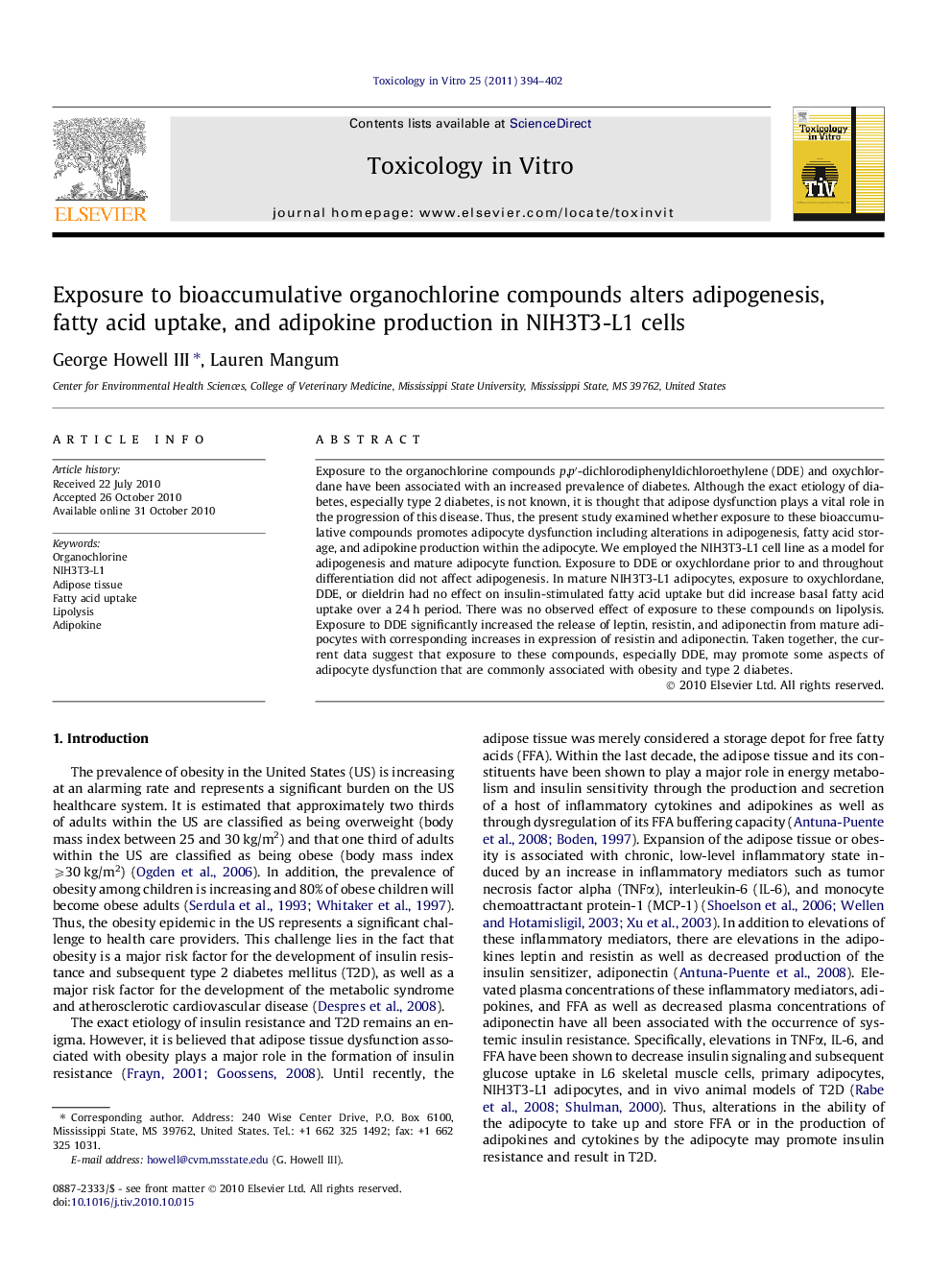| Article ID | Journal | Published Year | Pages | File Type |
|---|---|---|---|---|
| 2602912 | Toxicology in Vitro | 2011 | 9 Pages |
Exposure to the organochlorine compounds p,p′-dichlorodiphenyldichloroethylene (DDE) and oxychlordane have been associated with an increased prevalence of diabetes. Although the exact etiology of diabetes, especially type 2 diabetes, is not known, it is thought that adipose dysfunction plays a vital role in the progression of this disease. Thus, the present study examined whether exposure to these bioaccumulative compounds promotes adipocyte dysfunction including alterations in adipogenesis, fatty acid storage, and adipokine production within the adipocyte. We employed the NIH3T3-L1 cell line as a model for adipogenesis and mature adipocyte function. Exposure to DDE or oxychlordane prior to and throughout differentiation did not affect adipogenesis. In mature NIH3T3-L1 adipocytes, exposure to oxychlordane, DDE, or dieldrin had no effect on insulin-stimulated fatty acid uptake but did increase basal fatty acid uptake over a 24 h period. There was no observed effect of exposure to these compounds on lipolysis. Exposure to DDE significantly increased the release of leptin, resistin, and adiponectin from mature adipocytes with corresponding increases in expression of resistin and adiponectin. Taken together, the current data suggest that exposure to these compounds, especially DDE, may promote some aspects of adipocyte dysfunction that are commonly associated with obesity and type 2 diabetes.
